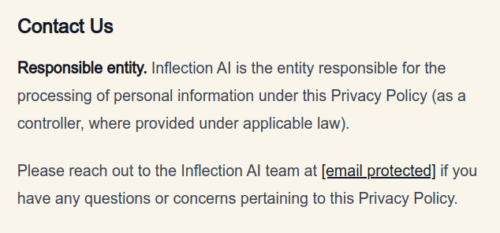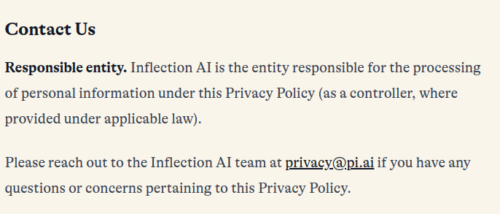One note from this years’ typical out-of-tune “BlackHat” festivities in Las Vegas has struck a particularly dissonant chord — a statement that regulators habitually trail behind the currents of innovation.
A main stage speaker expressed strange sentiment and stood in contrast to the essence of good regulation itself, which strives to act as an anticipatory framework for an evolving future (like how regulators of a car such as brakes and suspension are designed for the next turn, and not just the last one).
At the conference’s forefront a keynote gave what the speaker wanted people to believe as a historical pattern: governmental entities often mired in reactionary postures unable to get “ahead” of emerging technologies.
Unlike in the time of the software boom when the internet first became public, Moss said, regulators are now moving quickly to make structured rules for AI.
“We’ve never really seen governments get ahead of things,” he said. “And so this means, unlike the previous era, we have a chance to participate in the rule-making.”
Uh, NO. As much as it’s clear the keynote was attempting to generate buzz, excitement from opportunity, its premise is entirely false. This is NOT unlike any previous era in the situation as stated. In fact, AI is as old if not older than the Internet.
If what Moss said were even remotely true about regulators moving quickly to get ahead of AI, unlike other technology, then the present calendar year should read 1973 NOT 2023.
Regulations in fact were way ahead of the Internet and often credited for its evolutionary phases, for better or worse, making another rather obvious counter-point.
- Communications Act of 1934 reduced anti-government political propaganda (e.g. Hearst’s overt promotion of Hitler). It created the FCC to break through corporate-monopolistic grip over markets from certain extreme-right large broadcast platforms and promoted federated small markets of (anti-fascist) publishers/broadcasters… to help with the anticipated emerging conflict with Nazi Germany.
- Advanced Research Projects Agency Network, funded by the U.S. Department of Defense, in 1969 created the “first workable prototype of the Internet” realizing a 1940s vision of future decentralized peering through node-to-node communications.
- Telecommunications Act of 1996 inverted 1934 regulatory sentiment by removing content safety prohibiting extreme-right propaganda (predictably restarting targeted ad methods to manipulate sentiment, even among children), and encouraged monopolization through convergence of telephones, television and Internet.
I blame Newt “Ideas” Gringrich for the extremely heavy dose of crazy that went into that 1996 Act.
You hear Gingrich’s staff has these five file cabinets, four big ones and one little tiny one. No. 1 is ‘Newt’s Ideas.’ No. 2, ‘Newt’s Ideas.’ No. 3, No. 4, ‘Newt’s Ideas.’ The little one is ‘Newt’s Good Ideas.’
And I did say better AND worse, as some regulators warned about in 1944.
…inventions created by modern science can be used either to subjugate or liberate. The choice is up to us. […] It was Hitler’s claim that he eliminated all unemployment in Germany. Neither is there unemployment in a prison camp.
But perhaps even more fundamentally, Moss overlooks the fundamental nature of regulation — an instrument that historically has projected forward, preemptively calibrating guidelines to steer innovation and get ahead of things by navigating toward things like responsible or moral avenues to measure progress.
Moss’s viewpoint can be likened to a piece of a broader history of “BlackHat” disinformation tactics, which ironically wants to send out a call for proactive strides in outlining rules for the burgeoning realm of artificial intelligence because regulators are behind the times, while simultaneously decrying regulators who are doing too much too soon by not leaving unaccountable play space for the most creative exploits (e.g. hacking).
Say anything, charge for admission.
A more comprehensive and stable view emerges against the inconsistencies in their lobbying, by scrutinizing the purpose of regulatory frameworks. They are, by design, instruments of foresight, an architecture meant to de-risk uncharted waters of the future. Analogous to traffic laws, such as the highly controversial seat belt mandates that dramatically reduced future automobile-related fatalities, regulations are known for generating the playing field for genuine innovations by anticipating potential dangers and trying to stop harms. The also highly controversial Airbags were developed — an innovation driven by regulation — after the risk reduction of seat belts petered out. Ahead or behind?
In essence, regulatory structures are nothing if not future-focused. They are about drawing blueprints, modeling threats, calculating potential scenarios and ensuring responsible engineering for building within those parameters. Regulatory frameworks, contrary to being bound just to strict historical precedent, are vehicles of anticipation, fortified to embrace the future’s challenges with proactive insight.
While Moss’s sensational main stage performance pretends it can allude to past practices, it unfortunately spreads false and deceptive ideas about how regulators work and why. The giant tapestry of regulation around the world is woven with threads of anticipatory vigilance, made by people who spend their careers working on how to establish a secure trajectory forward.
Speaking of getting ahead of things it’s been decades already since regulators openly explained that BlackHat has racist connotations, and three years since major changes in the industry by leaders such as the NCSC.
…there’s an issue with the terminology. It only makes sense if you equate white with ‘good, permitted, safe’ and black with ‘bad, dangerous, forbidden’. There are some obvious problems with this…
Obvious problems, and yet the poorly-named BlackHat apparently hasn’t tried to get ahead of these problems. If they can’t self-regulate, perhaps they’re begging for someone with more foresight to step in and regulate them.
Now, don’t get me started on the history of cowboy hats and why disinformation about them in some of the most racist movies ever made (e.g. “between the 1920s and the 1940s”) does not in any way justify a tolerance for racism.
In this golden age of Westerns, good and evil weren’t color coded: there was plenty of room for moral ambiguity.
I say don’t get me started because as soon as someone says “but Hollywood said guy hats are white” I have to point them at the absolutely horrible propaganda that was actually created by Hollywood to form that association of a “White Hat” being “good”
…Hollywood took charge. In 1915, director D. W. Griffith adapted The Clansman as The Birth of a Nation, one of the very first feature-length films and the first to screen in the White House [and used by President Woodrow Wilson to restart the KKK]. Its most famous scene, the ride of the Klan, required 25,000 yards of white muslin to realize the Keller/Dixon costume ideas. Among the variety of Klansman costumes in the film, there appeared a new one: the one-piece, full-face-masking, pointed white hood with eyeholes, which would come to represent the modern Klan.
That’s how “room for moral ambiguity” in Westerns was codified by some wanting white to be “good”. BlackHat thus framing itself as a “bad” guy conference peddles racism straight out of 1915 Hollywood, and never in any good way. They really need to get ahead of things.
I mean practically any historian should be able to tell BlackHat that while in America the white hats typically were regarded as bad guys (very unlike the propaganda of Hollywood, promoting the KKK), an inverse to the evil lawlessness of American white hate groups was BLUE.
…lawless in its inception, [white hat wearing group] was soon dominated by the lawless element against which it was formed. The good citizens, instead of restoring law and order, became the servants and tools of disorder and mob violence. After two years of white-capism, another organization was formed to “down” the “White-caps,” called “Blue Bills.”
The Blue Bills, started by a doctor, in fact were all about law and order, rejecting the “anonymous hacker” methods of the white hats.
The Blue Bills did not consider themselves above the law; they didn’t consider themselves vigilantes, or heroes. They simply wanted to bring a stop to the terror that the White Caps had brought about…
But I digress… the BlackHat conference name is and always has been on the wrong side of history.






